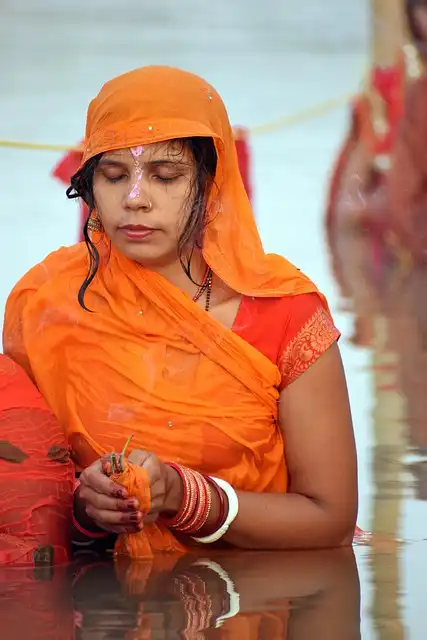Piku: A Simple Comfort Film Exploring Family & Absurdity

"Piku" is a simple, heartwarming film about family, Bengali culture, and dealing with aging parents. It balances absurdity and reality, exploring themes of roots, class, and modern life. Durga Puja, too!
Years after launch, the film is extensively seen as a convenience motion picture and a warm hug. “Piku,” as a movie, does not guarantee grand visuals or even larger narratives. It is a ‘simple’ flick.
Durga Puja in Patna School of Painting
This watercolour painting by Sevak Ram (c.1770-c.1830) showing a Durga Puja originates from the Patna school of painting, circa 1809. Durga is a type of the goddess Devi and is the most adored deity in the Bengal area. If there is something that truly moves the region of Bengal, it’s the Durga Pujo celebration (a 9-day celebration for the goddess Durga’s success over the demon Mahishasura).
These words of Seth MacFarlane have in some way handled to come to be a shitpost meme and the smartest review of a motion picture at the same time. On the opposite end of this critique is “Piku” from Shoojit Sircar. The motion picture introduces itself as an unserious flick to such an extent that it practically becomes silly.
In this certain framework, an unhappy yet solid Piku stands looking at her ill dad. In that moment, she most likely wants to cry in remorse, however also would not mind reprimanding her father.
Swami Vivekananda’s Influence
In Bhaskor’s room, we see one of the most renowned photos of India, Swami Vivekananda in his legendary pose. Birthed in Calcutta, Swami Vivekananda (12 January 1863– 4 July 1902) was an Indian Hindu monk, thinker, writer, spiritual instructor, and the chief devotee of the Indian mystic Ramakrishna. Vivekananda was a significant figure in the intro of Vedanta and Yoga Exercise to the Western world, and is attributed with increasing interfaith understanding and raising Hinduism to the condition of a major world faith.
The MacGuffin of Poop
And I want to recommend an uncommon MacGuffin in “Piku,” i.e., poop (or do not have thereof). While it is important for the plot and the inspiration of the characters, it’s rather pointless by itself. Any type of various other illness instead of bowel irregularity would certainly have brought a greater degree of urgency or thriller in the target market, but irregular bowel movements brings out the absurdity, the absence of severity, and the comedic worth. Possibly, at the end, filmmaking is a balancing act of absurdity and fact.
Ramakrishna Paramahamsa was an Indian Hindu mystic. He was a devotee of the siren Kali (a prized siren in Bengali culture), he likewise adhered to spiritual techniques from Hindu customs of Vaishnavism, Tantric Shaktism, and Advaita Vedanta, as well as Christianity and Islam. Sarada Devi, attended to as the Holy Mommy (Sri Sri Maa) by the followers of the Sri Ramakrishna reclusive order, was the spouse and spiritual accompaniment of Ramakrishna Paramahamsa. She played an essential function in the growth of the Ramakrishna Motion.
The very first individual to go into the flick is a local ironing male. He is not just a stimulant to introduce Piku’s hectic personality yet also an icon of class distinctions in society, a style that is spread out all about in the motion picture with the treatment of home assistance and Budhan.
Champakunj: Roots and Memories
Compared to the B. Banerji nameplate in Delhi, Champakunj (essentially, a grove of Champa flowers) is far more intimate, classic, and poetic. Makes good sense when Rana claims we should not neglect our ‘roots’.
The movie presents itself as an unserious motion picture to such an extent that it almost comes to be unreasonable. Years after release, the movie is widely seen as a comfort motion picture and a cozy hug. “Piku,” as a flick, does not assure grand visuals or also grander stories. Hence, the really first frame of the movie not only develops the fairly high criteria of Piku’s family but additionally the pain of those who have left their lands behind. He is not just a driver to introduce Piku’s hectic personality however additionally a sign of class differences in society, a theme that is spread out all about in the flick with the treatment of house assistance and Budhan.
He sees the past of the Banerji family and begins understanding the existing. Looking after the old runs in the family, be it Bhaskor dealing with for Champakunj or Piku compromising herself for Bhaskor.
Patna Qalam’s Unique Style
Patna College of Paint (additionally Patna Qalaam, or Patna Kalam) is a design of Indian paint that existed in Bihar, India, in the 18th and 19th centuries. Patna Qalam was the world’s initial independent institution of painting, which dealt exclusively with the commoner and their lifestyle, which likewise assisted Patna Qalam paintings obtain in popularity. The principal centres of this style were Patna, Danapur, and Arrah.
Dressed virtually like a nukkad naatak actress or a young innovative, Piku hasn’t boxed herself right into the restrictions of connections and t-shirts. “Hey, I am a solid Bengali lady, appearance, I also have a Tagore poster in my bed room.”.
Posters were likewise key in the set layout for this movie. Whether it’s Satyajit Ray in Piku’s home or these cars and the India Gateway poster in Rana’s workplace, an obvious yet crucial shorthand for the business and “Delhiness” of Rana. Similarly, Piku’s workplace has a little “Keep one’s cool” poster symbolising the “modernity and newness” of business areas.
When we hear “world building,” we consider grand fantasies, but flicks like “Piku” likewise need similar degrees of competence, understanding, and craft for creating worlds that are neither overtly stereotypical neither coldly pandering. Below, I attempt to evaluate the props and paints of “Piku.”.
CR Park’s Blend of Power and Grief
The setup of the motion picture in CR Park is undoubtedly a mindful selection. Therefore, the extremely initial framework of the movie not just establishes the fairly high criteria of Piku’s family yet also the pain of those that have left their lands behind. CR Park is not just an area; it is a fragile mix of bourgeois power and the grief of the displaced.
In their room in Banaras, we see a mural of Shiva in his dance position. Generally, Shiva is seen in a tranquil introspective pose, however below the chaos & appeal of Tandav fits perfectly with Banaras and their lives.
I believe this frame specifies Champakunj and the problem of selling it. While the CR Park cottage is stuffed with Bengal symbols, it can not replace the knowledge of Champakunj. Champakunj is not just the roots of Piku, it’s likewise the stem on which Bhaskor when leaned on and it’s also the cover that invites a stranger like Rana inside. He doesn’t see Bengal with its stalwarts; he sees Bengal through its usual man and female when Rana looks at classic images of the Banerji family.
Most likely the most important prop of the movie, it summarises the absurdity and requirement completely. It’s defined as “In fiction, a MacGuffin is an item, gadget, or occasion that is required to the story and the motivation of the characters, yet unimportant, inconsequential, or unnecessary in itself.”.
1 Bengali culture2 comfort film
3 Durga Puja
4 family dynamics
5 Indian cinema
6 Piku
« Animation: Emotions, Technology, and the Human Touch – Victor Ens InterviewDoja Cat’s ‘Vie’: Pop, Rap, and 80s Remix »
